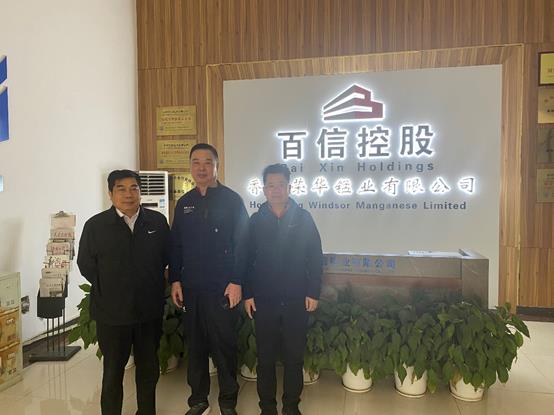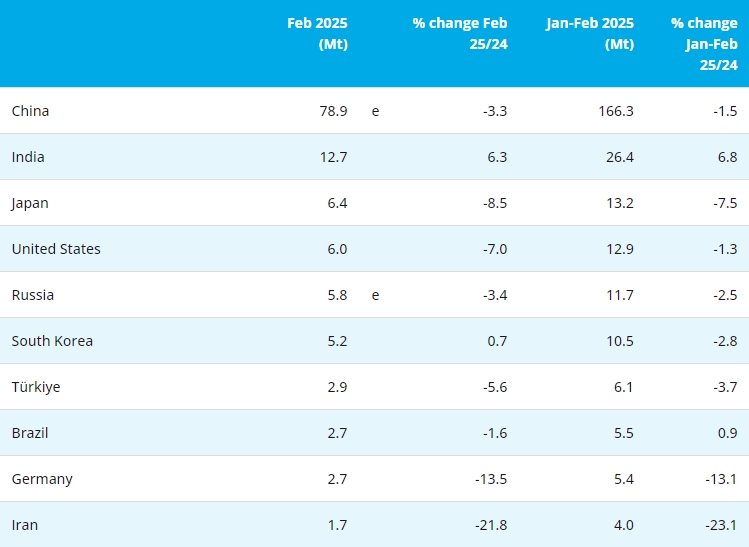It seems like a good time to discuss Cancana Resources Corp. (TSXV:CNY) in lieu of their news release yesterday on achieving record production for the last 6-month period in its ramp up of manganese mining in Brazil. While Manganese is in the doghouse like so many other metals, the Brazilian Real has been giving a strong countervailing tailwind as one of the WORST performing currencies in the world over the last twelve months. This has strongly reduced cash costs in real terms while lower oil prices have also helped (though that kicker is moderated by the fact that the currency has slumped). At the same time Cancana has been pushing production up to generate cashflow and prove its thesis with regards to the properties potential and the demand for fertilizer manganese in Brazil.
Sentient
It’s worth noting in these days of straightened finances that Cancana’s partner is the hedge fund group, Sentient. Sentient is a resource-focused private equity fund with approximately $2.7Bn in assets under management, and a 15-year track record for advancing resource projects from early stage to pre-feasibility and development. We have come across Sentient before, principally in the context of the Rincon Lithium salar asset in Argentina.
Brasil Manganese Corporation (BMC)
In 2014, the producing assets of two miners (Rio Madeira and Eletroligas) operating in the vicinity of Cancana’s concession in Rondonia came under the ownership of Brasil Manganese Corporation (BMC), Cancana’s joint venture partnership with Ferrometals (which is a special purpose investment vehicle for The Sentient Group). As of November 2015, Ferrometals had contributed US$21,570,000 and Cancana had contributed US$7,500,000 to BMC. Based on these contributions, Ferrometals owns approximately 74% and Cancana owns the remaining 26% of BMC. The option for Cancana to increase its ownership in BMC to 40% was allowed to expire unexercised on November 7th, 2015.
Some Back Story
So the JV’s focus is on exploring and developing the BMC manganese project in the far western state of Rondônia in Brazil. This state borders Bolivia. The assets consist of concessions that the company accumulated itself and then the plant and deposits of two other producers that the BMC Joint Venture bolted on in 2014 to take the step up to being a producer.
The backstory to the two companies acquired is that Manganese was first explored for by Rio Madeira Mineracao in 2005. The partners in that firm recognized an opportunity to create a niche market for high-grade, high-value manganese cobbles. These cobble fields were known from road cuts and discussions with local farmers. The black cobbles were visible in roadbeds, especially after a rain. Minimal exploration uncovered several occurrences of these “boulder patches”. The company built a processing plant, which became operable during 2008.
The geology of the concession area consists of Proterozoic aged granitic plutons underlying several high-grade manganese occurrences. The mineralization occurs as close-packed, rounded to angular clasts of Pyrolusite / Manganite within a saprolitic soil. The clasts range in size from sand particles to boulders greater than 1m on a side. Prior to Cancana’s arrival on the scene this type of mineralisation had already been put into production by Rio Madeira and Eletroligas, two companies operating in the area.
In its 2015 NI43-101 report the consultants noted that very little exploration had been performed to date and that Cancana needed to initiate regional exploration programs aimed at identifying manganese occurrences with follow up leading to resource and reserve calculations. That report was based upon exploration over an area of a mere 4.4 hectares, containing an inferred resource of 35,000 tonnes of mineralization with an average grade of 54% Mn.
In October of 2015, the partners in the JV purchased a new exploration licence (highlighted in yellow in the map below). This new exploration license added 3,923 hectares bringing the total land package to approximately 108,000 hecatres.
At the same time it added a second drill rig (man-portable), ideal for working on hill slopes that would otherwise be inaccessible for a conventional rig. The second drill rig was contracted for 2,000 meters of drilling, bringing the current Phase II drill program to 4,000 meters.
Manganese – Fertiliser for a Domestic Audience
While Manganese is primarily used in the production of steel, the high-grade and high-purity nature of the material produced at BMC qualifies as ‘agricultural-grade’ manganese and can be sold at a premium. Manganese is an important plant micronutrient and is required by plants in the second greatest quantity compared to iron. Manganese is a major contributor to various biological systems including photosynthesis, respiration, and nitrogen assimilation. Manganese is also involved in pollen germination, pollen tube growth, root cell elongation and resistance to root pathogens.
Manganese deficiency in plants is evidenced by symptoms which often look like those of iron deficiency. Deficiency can occur from low fertilizer application rates, use of general purpose fertilizers (which typically have reduced micronutrient contents), excessive leaching or applying too many iron chelate drenches.
The goal here though is not for the product from Cancana’s venture to go to the export market but rather to go for domestic fertilizer usage in the soybean industry in particular.
Operations
The mining is open cut, indeed it is somewhat akin to scraping the surface as the weathered boulders are the main material sought after.
The interesting graphic above shows a conceptualization of the mineralisation at the Dnei-Zenilda open pit which was extended in recent months into the vein system.
The average grade across all product sizes based on current information is 52.1% Mn. The coarse product stockpiles average 52.8% Mn and the fine-medium material averages 50.6% Mn. The results show that the breccia vein material can be successfully upgraded to a quality product where it is hosted within kaolinitised (clay-altered) granite. The manganese mineral content of the breccia vein is variable but on average represents approximately half the rock volume. The wash-plant removes the clay-altered silicate minerals with no crushing, to produce a product that is in line with the grade of current colluvial mining operations. A proportion of the mineralization below 5mm is currently not recovered in the plant.
BMC produced 2,143 tonnes of manganese product during the June quarter from colluvial sources, bringing stockpiles to 7,056 tonnes (net of sales) at the end of June. BMC then went on to produce 2,045 tonnes of manganese in the month of July 2015, being record production levels for the Rio Madeira plant.
Fourth quarter production at BMC totalled 6,536 tonnes of manganese mineral product, bringing stockpiles as at the end of the fourth quarter to 19,233 tonnes. The average grade for stockpile assays from third quarter production was 51.4% Mn with assays for fourth quarter production are pending. Based on available assay data the average grade of the stockpile at December 31, 2015 was 51.3% Mn. The ever-growing stockpiles might imply that the company is trying to market-time a turn in Manganese prices.
Total annual production for 2015 totalled 17,037 tonnes of manganese mineral product. The Rio Madeira plant produced 12,996 tonnes, compared to historical averages of 11,500 tonnes. Much of this (82%) was achieved in the second-half of the year after the implementation of safety and operational improvements, representing a record six-month production period for the plant.
The lower production for the Jaburi Plant was principally due to the closure during the third quarter for safety and operational improvements. However operations recommenced in parallel with ongoing construction during the fourth quarter.
The combined fourth quarter production figures decreased marginally from the third quarter production due to Christmas closure period and commencement of the wet season. Production is expected to be lower in the first quarter of 2016 in line with traditional operating conditions.
Pricing
When we wrote before the company had managed to achieve prices averaging more than a 30% premium on then (June) CIF prices.
Recently the company reported that CIF Tianjin pricing for 44% manganese was $1.86 per dmtu as of December 29th, 2015, compared to the US$2.98 per dmtu as of June 26th, 2015. Quite a hefty fall and in not surprising in view of the travails of the steel industry where most Manganese ends up being used.
The Financing Picture
In early November 2015 Cancana entered into a loan agreement for a short-term loan from its largest shareholder and joint venture partner, Ferrometals BV in the amount of US$2mn to be repaid at the end of June 2016 and bearing interest at a rate of 10% per annum. The use of proceeds of the loan will be for general working capital purposes, including the settlement of a legacy issue in Brazil dating back to 2004. This relates to its previous incarnation as a diamond explorer and involves the payment of $525,000.
The loan was expected to be disbursed by late December 2015. With the option expiring and the loan in place, Cancana said it would focus on maintaining and funding its 26% interest going forward.
The loan is secured by a share pledge over Cancana’s shares in BMC in favour of Ferrometals. We have not heard bad things about Sentient so we suspect that this will not end up like the deals that others have done with the likes of Waterton and Oaktree in the gold and Tungsten space respectively.
Conclusion
Nothing helps prove that a project is serious than production, next step is to show that the production is profitable and scalable.
The Joint Venture partners, Cancana and Ferrometals, are employing a two-pronged strategy at BMC. The primary objective is to advance BMC to an initial resource and onward to pre-feasibility, while also expanding current small-scale production to support those exploration activities. This matches the strategy we have seen a number of other more innovative miners have pursued with the small-scale operations funding the eventual bigger project.
With the Brazilian economy roiled by a return to “normality” and a currency in freefall the challenge/opportunity for Cancana will be to exploit this series of events to carve itself a niche in the manganese fertilizer space and become a source of import-replacement locally-sourced soil enhancement additives.
Article from Internet for Reference only
- [Editor:Sophie]



 Save
Save Print
Print



 Daily News
Daily News Research
Research Magazine
Magazine Company Database
Company Database Customized Database
Customized Database Conferences
Conferences Advertisement
Advertisement Trade
Trade










 Online inquiry
Online inquiry Contact
Contact

Tell Us What You Think